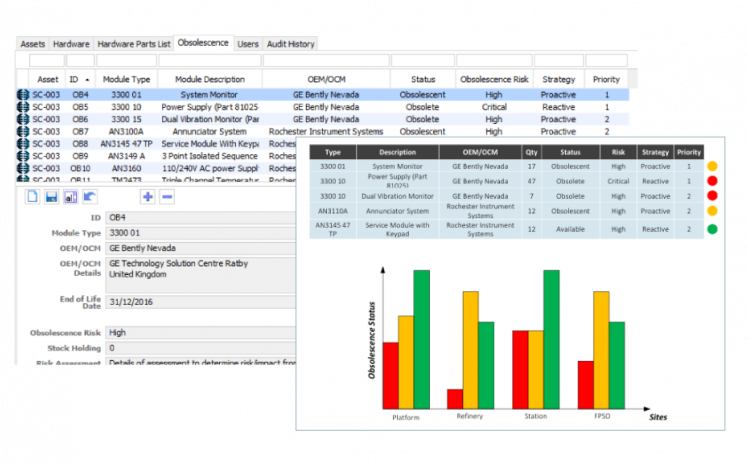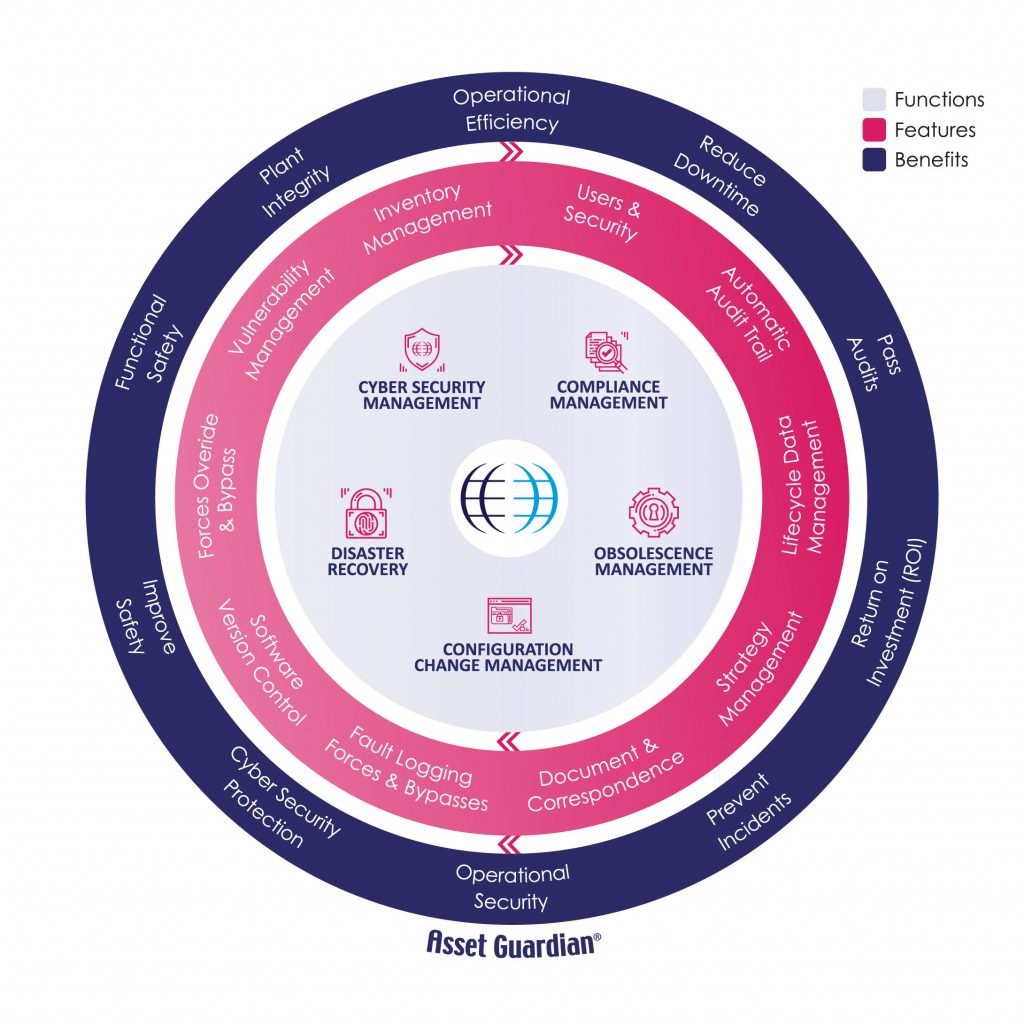
What is Planned Obsolescence?
Planned Obsolescence is proactively assessing the risks and impacts of obsolescence and planning and managing the strategies employed to reduce the associated risks.
For control systems, there are usually two phases of obsolescence. The first phase is where new parts are no longer available “off-the-shelf” from suppliers. The manufacturer still supports this phase on a repair and return basis. The second phase is where the part is fully obsolete and no longer supported.
Is Obsolescence an Issue?
One of the most fundamental features of a control system is its reliability. Control systems can operate without intervention for many years, however, this can cause a hidden issue. When a problem occurs and an affected part has become obsolete, finding a replacement part is not always straightforward.
Systems with short lifespans which are easily replaced and upgraded, may never get to the stage where obsolescence becomes an issue. However for ever reliable (and expensive) control systems, it is a real issue that is increasing over time and waiting to catch you out.
Planned Obsolescence Strategy to Reduce Risks
Luckily, the risks around obsolescence of control systems is reduced through effective planned obsolescence management. Planned Obsolescence management, if done correctly, will not cost, but save money. You will save costs many times over through preventing issues, reduced downtime if breakdowns do occur, and extending the life of your equipment. This means not having to upgrade full systems before it is really necessary.
IEC 62402 is the international standard for obsolescence management and its principals apply to any type of control system in a simple 5-step approach:
 1. Plan for Obsolescence
1. Plan for Obsolescence
It is never too early to start planning for obsolescence. Ideally, you should build obsolescence management into the project plan at system design. Usually it is retro-fitted on operational systems but either way, a plan should address obsolescence issues, define scope and objectives.
Recording information and decisions for each of the steps of obsolescence management is important. Top management should approve and regularly review the plan.
2. Generate the Bill of Materials (BoM)
Record all the components under obsolescence management. For control systems, this includes individual modules, racks, network equipment, computer workstations and servers, drives. Where appropriate, the scope may extend to intelligence devices, instruments and actuators.
It is important to consider software components such as integrated firmware, operating systems, programming tools, network drivers. This also includes bespoke software controlling your plant and equipment. You should record all the part information as well as quantities and locations installed. This is your bill of materials (BoM).
Having an accurate and complete bill of materials also provides many benefits for the general management of your control systems. It allows for more effective spares management, knowledge and skills management and better informed decisions for investments in upgrades and enhancements.
3. Assess Risks and Impact of Obsolescence
You should then conduct a first pass assessment on all components to assess the potential impact of that component being unavailable. Considering safety, operational and performance implications is vital, as well as the ease and impact of using a substitute.
You can then disregard low impact components, with a more detailed analysis done on the remaining components. The impact and probability of obsolescence considered to arrive at an obsolescence risk level for each component.
4. Derive Strategies
Deriving strategies on a priority basis is essential, where the highest risk components are prioritised.
There are two main strategies: a reactive obsolescence strategy (reacting to problems when they occur) and a proactive obsolescence strategy (developing and implementing a plan in advance).
A reactive strategy is an option when obsolescence risks are lower. The component is particularly dependable or the costs of a proactive strategy are prohibitively high. A reactive strategy could involve a part search for second-hand and third-party suppliers, cannibalisation of other systems or design revision. There can incur substantial consequential costs of an unplanned outage or of obtaining replacement parts. An estimate of these costs is advised as part of planned obsolescence.
A proactive strategy will reduce the probability of occurrence of obsolescence and/or decrease the impact when it does occur. It is important for higher risk components especially where there are safety considerations or where a proactive strategy is clearly cost-effective. A proactive strategy could involve close obsolescence monitoring which may lead to planned system upgrades or lifetime buys of spare parts. A proactive strategy will have associated costs and budgets provisioned to ensure sufficient funding for implementation.
5. Review and Monitor
The obsolescence data and strategies require review on a regular basis. Changing conditions may result in changes to strategies. Such changes include parts becoming unexpectedly unavailable, obsolete dates announced by manufacturers or budgets becoming available.
There is a requirement for up to data data for new system installations or completion of planned upgrades.
Monitoring of the obsolescence management process ensures ongoing effectiveness. It is possible to measure indicators for the number of obsolescence cases, resource usage, number of successful corrective actions, missed obsolescence issues and lessons learned. Such information demonstrates the effectiveness of the obsolescence management process and to secure continuing investment.
The Asset Guardian Obsolescence Management Solution
Obsolescence management can seem a daunting and expensive process but by following the Asset Guardian 5-step approach, it is a very cost-effective and efficient exercise.
It allows you to deal with the highest priority items first and not waste time and resources on low impact, low risk components. It also allows you to target budgets for possible upgrades where deemed most effective in reducing obsolescence issues, and extend the life of other equipment with a full understanding of the risks involved.
At each step in the management process it is critical to properly record all the information and decisions made, along with the reasons behind these decisions. Asset Guardian works as stand-alone solution for obsolescence management or as part of a fully integrated solution to manage all aspects of your control systems.
How you can benefit from using the Asset Guardian Obsolescence Management solution
Asset Guardian can make the obsolescence management process effective and streamlined while keeping the highest level of integrity by:
- Maintaining your full bill of materials along with the obsolescence information on each individual part.
- Allowing the impact and recording of risk assessments and automatically prioritises your risks.
- Recording all decisions on strategies along with justifications and plans.
- Tracking corrective actions through to completion.
- Assigning tasks to individuals or groups and sending automatic reminders.
- Planning and scheduling regular reviews is available, again with automatic reminders sent to assigned personnel.
- Reporting on worklists of tasks according to priorities along with statuses of all corrective actions.
- Making all obsolescence data available for reporting to show performance and effectiveness of the obsolescence management process, including estimates of savings made.

AGSL can also investigate any parts you have installed that are not already in our database and add that information too. We can work with you to assess impacts and risks of obsolescence and advise on strategies for dealing with obsolescence issues.
We can also carry out regular reviews, updates and audits of your data, ensuring your whole obsolescence management process is operating in a continually efficient and cost-effective manner.
If you would like more information on Asset Guardian Software, or would like to request a demonstration, please get in touch.
References
Romero Rojo F J, Roy R, Kelly S (2012). Obsolescence Risk Assessment Process Best Practice, Journal of Physics: Conference Series, 2012, Volume 364, 012095
International Obsolescence Management Standard IEC 62402:2007. ISBN: 9780580547355
Written by Iain Rennie. As AGSL’s Product Development Manager, Iain Rennie is responsible for leading the company’s product development and technology strategy. Before joining AGSL in 2008, Iain was employed for 14 years as a process control and automation specialist for Elite Control Systems Limited, where he worked on projects in Europe, China, the USA and Azerbaijan. He is the company’s Quality Manager, and heads the Asset Guardian software solution development team. Iain holds a Bachelor of Science - Honours degree in Mathematical Physics from the University of Edinburgh, and a Master’s degree in Control Systems Technology from Edinburgh’s Napier University in Edinburgh, where he graduated with distinction. A Chartered Engineer, he is a member of the Institution of Engineering and Technology (IET).





